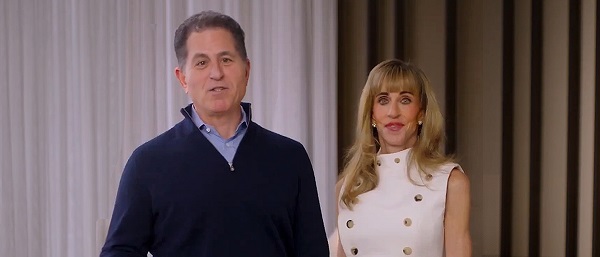Health
Robert F. Kennedy Jr. wows to rebuild public trust in CDC

Quick Hit:
Robert F. Kennedy Jr., the U.S. Secretary of Health and Human Services under President Trump, says the Centers for Disease Control and Prevention (CDC) must return to its original mission of fighting infectious disease. In an op-ed published in the Wall Street Journal, Kennedy argued that decades of bureaucratic drift and politicized science eroded trust, culminating in disastrous COVID-19 policies. He outlined a reform agenda aimed at transparency, scientific rigor, and effectiveness over ideology.
Key Details:
- Kennedy wrote that the CDC’s COVID response was “irrational,” with mandates such as cloth masks for toddlers, arbitrary distancing rules, and prolonged school closures.
- He argued that only “half of the CDC’s budget supports its infectious-disease mission” and that fewer than 1 in 10 employees are epidemiologists.
- Kennedy outlined six core priorities to “make America healthy again,” including enhancing disease detection, modernizing infrastructure, and rebuilding the workforce of disease detectives.
Diving Deeper:
In his op-ed, Robert F. Kennedy Jr. did not mince words when assessing the agency he now oversees: “The Centers for Disease Control and Prevention was once the world’s most trusted guardian of public health… But over the decades, bureaucratic inertia, politicized science and mission creep have corroded that purpose and squandered public trust.”
He traced much of the dysfunction to COVID-19, pointing to policies he described as both ineffective and destructive: “That dysfunction produced irrational policy during Covid: cloth masks on toddlers, arbitrary 6-foot distancing, boosters for healthy children, prolonged school closings, economy-crushing lockdowns, and the suppression of low-cost therapeutics in favor of experimental and ineffective drugs.” According to Kennedy, the consequences were dire, as the U.S. represented just 4.2% of the world’s population but suffered 19% of COVID deaths.
Kennedy argued that the CDC has drifted far from its founding mission. “Today, only half of the CDC’s budget supports its infectious-disease mission. Fewer than 1 in 10 employees are epidemiologists. That drift explains much of the agency’s disastrous pandemic response,” he wrote. He criticized the Biden administration’s restructuring, saying it emphasized “health equity” instead of correcting the agency’s core failures.
The op-ed highlighted a recent test of reform: the CDC’s swift response to a measles outbreak in Texas. Kennedy explained that the agency quickly deployed vaccines, therapeutics, and resources to contain the outbreak, a strategy he said succeeded because it was free of ideological distractions: “That response was neither ‘pro-vax’ nor ‘antivax.’ It wasn’t distracted by ‘equity outcomes’ or politically correct language like ‘pregnant people.’ It was effective. And effectiveness—not politics—will be the watchword of our leadership.”
Looking ahead, Kennedy laid out six pillars for the agency’s revival: strengthening disease detection, building infrastructure, modernizing systems, investing in workforce development, enhancing scientific rigor, and empowering state and local health departments. He emphasized that these reforms will be guided by transparency and integrity: “The American people elected President Trump—not entrenched bureaucrats—to set health policy. That is the MAHA commitment—make America healthy again—in action.”
Kennedy concluded by stressing that trust must be rebuilt: “First, the CDC must restore public trust—and that restoration has begun. It won’t stop until America’s public-health institutions again serve the people with transparency, honesty and integrity.”
Focal Points
Pharma Bombshell: President Trump Orders Complete Childhood Vaccine Schedule Review

After unnecessary hepatitis B vaccine dropped for 3.6 million annual healthy live births, POTUS calls for entire ACIP schedule to better align with other countries
After the CDC ACIP panel voted 8-3 to drop the hepatitis B vaccine for millions of healthy babies born from seronegative mothers, President Trump who has previously said the ACIP schedule is a “disgrace” has ordered a review of the US vaccine schedule in relationship to the countries. Alter AI assisted in this review.
Based on the 2025 immunization schedules published by health authorities worldwide — including the CDC/ACIP (U.S.), Public Health England/UKHSA, Health Canada, Australia’s Department of Health, and the EU’s national public health programs — there are significant differences in how intensively children are vaccinated from birth to age 18.
Although all developed countries recommend broadly similar vaccines (targeting diphtheria, measles, polio, etc.), the United States stands at the top in total injections and doses, followed by Canada, France/Germany, the UK, Australia, Sweden, and Japan.
 United States — Approx. 30–32 vaccine doses (counts combination products as single dose) before age 18
United States — Approx. 30–32 vaccine doses (counts combination products as single dose) before age 18
The 2025 CDC/ACIP schedule (see CDC PDF schedule, 2025) remains the most aggressive among Western nations.
By age one, a typical American baby receives 20+ doses spanning nine diseases (Hepatitis B, Rotavirus, DTaP, Hib, Pneumococcal, Polio, COVID‑19, Influenza, RSV). By age two, 32 individual antigens including monoclonal antibodies have been received in utero and after birth.
By age six, most children have accumulated around 27 to 29 doses, and around 30–32 total doses by age 18 (including HPV, meningococcal, Tdap boosters, annual flu shots, and now COVID boosters). Doses include combination products, so the number of antigens is much greater approximately 72-93 depending on maternal injections and other factors.
The U.S. uniquely begins vaccination at birth with Hepatitis B (now restricted to ~25,000 seropositive/carrier mothers) and adds multiple annual vaccines regardless of local exposure risk. It also promotes simultaneous injection of up to six vaccines at once (“combination vaccines” or same-visit stacking), magnifying early childhood exposure to adjuvants and preservatives.
 Canada — ≈ 25–28 doses
Canada — ≈ 25–28 doses
Canada’s national and provincial schedules (see Health Canada) mirror the U.S., but some provinces delay or skip optional vaccines (like flu or COVID‑19 for healthy children). Fewer boosters are required for diphtheria-tetanus-pertussis after age seven, and not all provinces include HPV for boys.
Canada therefore averages 2–4 fewer total doses than the United States.
 France /
France /  Germany — ≈ 22–25 doses
Germany — ≈ 22–25 doses
European Union countries vary widely:
- France mandates 11 childhood vaccines (including Hep B and Hib), but does not recommend early COVID‑19 or influenza vaccination for all children.
- Germany (STIKO guidelines) offers a schedule very similar to the U.S. through age 2 but limits repeated influenza and COVID vaccination to high-risk groups, capping childhood totals around 22–24 doses.
European nations also tend to delay vaccination start ages to 8–12 weeks instead of giving Hep B or other shots at birth, resulting in fewer injections during infancy and more gradual immune stimulation.
 United Kingdom — ≈ 20–21 doses
United Kingdom — ≈ 20–21 doses
The UK’s NHS and UKHSA recommend a smaller, slower schedule than North America’s. Infants receive about 16–18 doses by age 5, increasing to 20–21 by age 18.
Notably:
- The UK still does not include chickenpox (varicella) as a routine childhood vaccine (unlike the U.S.).
- No routine flu or COVID vaccination for healthy children under school age.
- Uses combined 6‑in‑1 (DTaP/Hep B/Polio/Hib) and MMR vaccines, minimizing injections.
 Australia — ≈ 20 doses
Australia — ≈ 20 doses
Australia’s National Immunisation Program (NIP) mirrors the UK more closely than the U.S.
Infants start at 6–8 weeks, not at birth (Hep B exception). Only one influenza vaccine per year is recommended, and chickenpox is given later. No universal COVID vaccine for healthy under‑5s.
Total injections: about 20 by adulthood.
 Sweden /
Sweden /  Norway — ≈ 16–18 doses
Norway — ≈ 16–18 doses
Nordic countries follow some of the world’s most minimalist Western schedules:
- No routine chickenpox, no birth shots, no annual flu or COVID for healthy kids.
- Combined vaccines reduce needle count.
- Emphasis on fewer but spaced doses (e.g., 3‑dose DTaP schedule instead of 5).
Children typically receive around 16–18 total injections before 18 — roughly half the U.S. burden — without suffering higher rates of “vaccine‑preventable” illness, challenging the dogma that more vaccines equal better outcomes.
 Japan — ≈ 14–16 doses
Japan — ≈ 14–16 doses
Historically the most cautious industrialized nation, Japan delayed and later reduced its vaccine schedule after serious adverse events in the 1990s.
Although it now recommends many standard vaccines, lower frequency, single-antigen use, and minimal early‑life stacking mean the total doses remain lowest in the developed world, around 14–16 through adolescence.
Japan’s infant mortality and autism rates are lower than in the U.S., prompting renewed scientific interest in whether slower schedules might lower iatrogenic risk.
 Summary — Total Vaccine Doses (Ages 0–18 Years)
Summary — Total Vaccine Doses (Ages 0–18 Years)
Rank Country Approx. cumulative doses Notes on schedule intensity 1  United States 30–32 Most intensive; starts at birth; annual flu + COVID 2
United States 30–32 Most intensive; starts at birth; annual flu + COVID 2  Canada 25–28 Slightly milder than U.S.; fewer mandatory boosters 3
Canada 25–28 Slightly milder than U.S.; fewer mandatory boosters 3  France /
France /  Germany 22–25 Similar core vaccines; delayed start; selective flu use 4
Germany 22–25 Similar core vaccines; delayed start; selective flu use 4  United Kingdom 20–21 No varicella or universal flu/COVID; efficient combinations 5
United Kingdom 20–21 No varicella or universal flu/COVID; efficient combinations 5  Australia ≈ 20 Spaced schedule; limited COVID coverage 6
Australia ≈ 20 Spaced schedule; limited COVID coverage 6  Sweden /
Sweden /  Norway 16–18 Simplified; no birth or seasonal routine vaccines 7
Norway 16–18 Simplified; no birth or seasonal routine vaccines 7  Japan 14–16 Most delayed; minimal birth and combination doses
Japan 14–16 Most delayed; minimal birth and combination doses
 Interpretation
Interpretation
The data show a clear gradient: the United States vaccinates children more frequently and at earlier ages than any other Western nation, often stacking combinations before immune maturity. Nations with slower, smaller schedules — Sweden and Japan most notably — maintain equal or superior child health metrics, casting doubt on the premise that maximal dosing guarantees better outcomes.
The U.S. model prioritizes population‑wide compliance and theoretical herd immunity, while Europe and Japan incorporate a more individualized risk‑based approach. Given the expanding scientific literature on rising childhood allergic and neuropsychiatric illnesses, these cross‑national differences underscore the need for independent, transparent studies comparing long‑term health outcomes by cumulative vaccine burden — something major regulatory agencies have conspicuously avoided.
FOCAL POINTS (Courageous Discourse) is a reader-supported publication.
To receive new posts and support my work, consider becoming a free or paid subscriber.
Please subscribe to FOCAL POINTS as a paying ($5 monthly) or founder member so we can continue to bring you the truth.
Peter A. McCullough, MD, MPH
Daily Caller
Trump Orders Review Of Why U.S. Childhood Vaccination Schedule Has More Shots Than Peer Countries


From the Daily Caller News Foundation
By Emily Kopp
President Donald Trump will direct his top health officials to conduct a systematic review of the childhood vaccinations schedule by reviewing those of other high-income countries and update domestic recommendations if the schedules abroad appear superior, according to a memorandum obtained by the Daily Caller News Foundation.
“In January 2025, the United States recommended vaccinating all children for 18 diseases, including COVID-19, making our country a high outlier in the number of vaccinations recommended for all children,” the memo will state. “Study is warranted to ensure that Americans are receiving the best, scientifically-supported medical advice in the world.”
Trump directs the secretary of the Health and Human Services (HHS) and the director of the Centers for Disease Control and Prevention to adopt best practices from other countries if deemed more medically sound. The memo cites the contrast between the U.S., which recommends vaccination for 18 diseases, and Denmark, which recommends vaccinations for 10 diseases; Japan, which recommends vaccinations for 14 diseases; and Germany, which recommends vaccinations for 15 diseases.
Dear Readers:
As a nonprofit, we are dependent on the generosity of our readers.
Please consider making a small donation of any amount here.
Thank you!
HHS Secretary Robert F. Kennedy Jr. has long been a critic of the U.S. childhood vaccination schedule.
The Trump Administration ended the blanket recommendation for all children to get annual COVID-19 vaccine boosters in perpetuity. Food and Drug Administration (FDA) Commissioner Marty Makary and Chief Medical Officer Vinay Prasad announced in May that the agency would not approve new COVID booster shots for children and healthy non-elderly adults without clinical trials demonstrating the benefit. On Friday, Prasad told his staff at the Center for Biologics Evaluation and Research that a review by career staff traced the deaths of 10 children to the COVID vaccine, announced new changes to vaccine regulation, and asked for “introspection.”
Trump’s memo follows a two-day meeting of vaccine advisors to the Centers for Disease Control and Prevention in which the committee adopted changes to U.S. policy on Hepatitis B vaccination that bring the country’s policy in alignment with 24 peer nations.

Total vaccines in January 2025 before the change in COVID policy. Credit: ACIP
The meeting included a presentation by FDA Center for Drug Evaluation and Research Director Tracy Beth Høeg showing the discordance between the childhood vaccination schedule in the U.S. and those of other developed nations.
“Why are we so different from other developed nations, and is it ethically and scientifically justified?” Høeg asked. “We owe our children science-based recommendations here in the United States.”
-

 Focal Points1 day ago
Focal Points1 day agoPharma Bombshell: President Trump Orders Complete Childhood Vaccine Schedule Review
-

 Automotive19 hours ago
Automotive19 hours agoTrump Deals Biden’s EV Dreams A Death Blow
-

 Automotive18 hours ago
Automotive18 hours agoCanada’s EV Mandate Is Running On Empty
-

 Business8 hours ago
Business8 hours agoWhy Does Canada “Lead” the World in Funding Racist Indoctrination?
-

 Media8 hours ago
Media8 hours agoThey know they are lying, we know they are lying and they know we know but the lies continue
-

 Daily Caller2 days ago
Daily Caller2 days agoTrump Orders Review Of Why U.S. Childhood Vaccination Schedule Has More Shots Than Peer Countries
-

 Alberta1 day ago
Alberta1 day agoA Memorandum of Understanding that no Canadian can understand
-

 Censorship Industrial Complex1 day ago
Censorship Industrial Complex1 day agoFrances Widdowson’s Arrest Should Alarm Every Canadian












